How Chunk made a game out of sleep
Channel 4 wanted to raise awareness about the importance of a good night's sleep, in an entertaining way; here's how Chunk turned this challenging brief into Zeds, a sleep-powered iOS game.
Quality of sleep is a problem for many teenagers; too many energy drinks, too many late night chats and gaming sessions and too much brain stimulus before falling asleep. But how do you raise awareness?
The brief
Teens don't hate sleep, it just gets in the way of stuff that seems best late at night, like TV and games; and waking for school gets in the way of catching up on the sleep you miss. But a lack of sleep or poor quality of sleep affects your day; how well you concentrate and how much energy you have amongst other things. Channel 4's challenge was raising awareness and helping the audience to understand more about sleep and its effects.
Channel 4's general approach to education is to present the facts in an entertaining way and let the audience make up their own mind, not to force opinion. And that was Chunk's brief – to raise awareness of sleep in an entertaining way.
Eureka
Coming up with ideas, for us, is about mixing up all the different things we know or learn about a subject, the audience, technology, trends and the like; and seeing what ideas come out of the interesting combinations.
And we try to inject something original. It's obviously important to make a great, effective thing, but there are lots of great things out there. What's going to make people sit up and take notice in the first place?
Lots of our initial ideas centred on stories around the mythology of sleep and characters like Hypnos or the Oneiroi, but it felt a little too fantastical. On the flip side there was the more scientific area of sleep monitoring technology and that ended up being the inspiration for our idea. Sleep monitoring provides a factual understanding of your sleep; what if that data could shape a game?
And so Zeds was awoken; a game you can only dream of. (Sorry).
Get the Creative Bloq Newsletter
Daily design news, reviews, how-tos and more, as picked by the editors.
Zeds is a platform runner game for iPhone and iPod whose levels are built by your sleep. The game has a built in sleep monitor and each time you record your sleep the game delivers a brand new track to play.
Recording Sleep
The concept of Zeds is unique – what other game creates levels from sleep? Creating something new is a nice way to attract players, but it also gives you the problem of figuring out how to do it! Creating a sleep-monitoring app hadn't figured highly in our plans before Zeds and after the idea came figuring out how to do it.
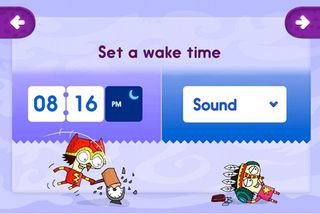
We knew of other sleep monitoring apps in the app store, so we knew it was possible (which is important!). We spoke to sleep experts about how sleep apps work, other ways they monitor sleep and what it tells them. Without additional attachments, smartphone sleep monitors use the accelerometer to track motion and sometimes the mic to track sound. What quickly became apparent from talking to experts is that it's not enough to give you accurate diagnosis of a person's sleep; without heart monitors or brain scans we can only estimate what might be happening during sleep.
But, that's fine! We don't have to accurately assess sleep. We don't have to be a doctor, our job is to raise awareness of sleep and by telling people what could be happening during their sleep and what it could mean, it's enough to create awareness of issues and provide a little education on the subject – and hopefully inspire them to learn more.
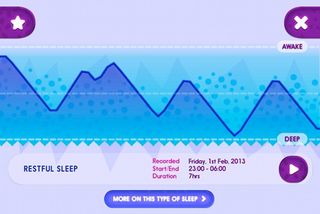
So what do we measure? When people have a normal sleep they go through 90 minutes cycles, where they move from light to deep sleep and back again. By tracking a person's movement and noise during sleep we estimate when and how often people break out of that good cycle. Deep sleep is when people really recuperate and recharge; if they're moving or making noise when they should be in the deep sleep part of the cycle we can tell them they may not be getting the best sleep they can and some of the potential causes. If that coincides with feeling tired it might encourage them to investigate further.
The Game
Why record your sleep in the first place? Because when you wake in the morning there's not only some interesting analysis of your sleep from sleep experts; hit 'Play' and there's a nice shiny new game to play that's as unique as your sleep.
In the game you guide sleepy little characters called Zeds across dangerous tracks to the safety of their bed by quickly tapping, swiping and clearing the track created by your dream data. The more Zeds make it home the more points you gain. A rough night's sleep or a smooth slumber will bring different challenges for you and the Zeds; and when you 'create' a track you love you can share it with your friends.
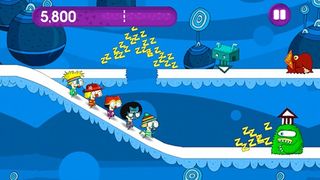
Education
The learning in Zeds is implicit. By recording and playing through sleep patterns, players naturally learn to recognise and understand more about their sleeping habits. They'll notice how long they're sleeping; the quality of their sleep; and playing helps reinforce recognition of the patterns.
Game Design
The game is a platform runner with a little twist of controlling a team, rather than a single character.
The main game loop is that the better players do the more points their Zeds team can pick up on levels. A player starts with 3 Zeds, which essentially means 3 lives on each level. Each Zed has a points multiplier and as you improve, their multipliers increase – increasing your score potential. Good performances also unlock more Zeds for your team – creating even bigger scores. And you can unlock new outfits of course!
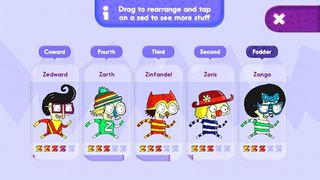
Art
We wanted the game to look different to the shiny, fun, vector-perfect art styles of a lot of mobile games – games like Jetpack Joyride, Tap the Frog, Cut the Rope and the like. We were looking for something that felt different and a little strange, as dreams are, so we thought of The Brothers McLeod, animators who we had considered for another project.
They hadn't created art for a game before, but it didn't really worry us, because we've worked with illustrators and animators from different fields, and they were really ready to dive in. Together we established some ideas for the characters and the baddies and The Brothers McLeod ran with it and created some really amazing characters and environments.
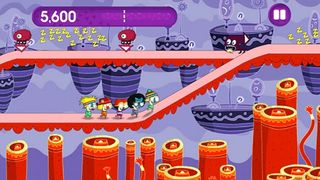
Development
When choosing a development technology we had a number of factors to consider. We'd like to be able to port it to Android at a future date; we'd need direct access to hardware features such as the accelerometer and microphone; we'd need to support a mix of 3D and 2D elements and we'd need a reasonably extensive app interface in addition to the gameplay itself. In the end, we opted to create a hybrid approach, using Unity for the game itself, and native iOS for the sleep monitor and application interface, allowing us to play each of the technologies to their respective strengths.
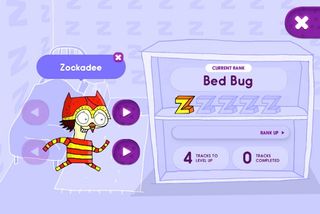
Allowing users to share sleep data was a key objective, and something that we wanted to be able to support cross-platform, ideally without the requirement of running a backend server 24/7 to support this exchange. In the end we opted to create a simple format for the sleep files that players could share via email and install on any device.
Taking this approach has also meant that the project is relatively agile – we can port the game quickly to any platform Unity supports and can easily add support for new hardware devices like the iPhone 5S's M7 Motion Coprocessor without having to wait for support to be added to Unity itself.
Potential
So that's Zeds, it's a tricky idea that Chunk's proud to have pulled off. And we think it has lots of potential for the future. We'd love to add more to the game; making the worlds more varied, rewarding progression, improving sharing of levels and increasing competition are amongst a host of features we'd like to include. Hopefully it'll be more than a dream.
Words: Donnie Kerrigan
Donnie is MD of Chunk, who help organisations achieve their goals through interactive entertainment. Chunk has helped some of the world's biggest brands, broadcasters and entertainment companies to raise awareness of their products, educate, reposition, engage, sell – whatever the challenge – through branded and multiplatform entertainment.
Liked this? Read these!
- How to build an app: try these great tutorials
- Discover what's next for Augmented Reality
- Great examples of doodle art
Seen an innovative app? Tell us about it in the comments!

Thank you for reading 5 articles this month* Join now for unlimited access
Enjoy your first month for just £1 / $1 / €1
*Read 5 free articles per month without a subscription

Join now for unlimited access
Try first month for just £1 / $1 / €1
The Creative Bloq team is made up of a group of design fans, and has changed and evolved since Creative Bloq began back in 2012. The current website team consists of eight full-time members of staff: Editor Georgia Coggan, Deputy Editor Rosie Hilder, Ecommerce Editor Beren Neale, Senior News Editor Daniel Piper, Editor, Digital Art and 3D Ian Dean, Tech Reviews Editor Erlingur Einarsson and Ecommerce Writer Beth Nicholls and Staff Writer Natalie Fear, as well as a roster of freelancers from around the world. The 3D World and ImagineFX magazine teams also pitch in, ensuring that content from 3D World and ImagineFX is represented on Creative Bloq.
